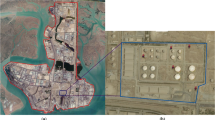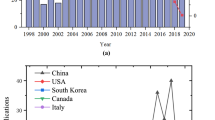Abstract
Artificially soiled test fabrics are widely used to study the cleaning performance of detergents formulations. In this study, artificial soiled cotton test fabrics were prepared in the laboratory using carbon black as a model soil. Design of experiments was used to optimise the concentration of detergent ingredients for stain removal. A multi-factorial analysis of variance was used to model the effect of sodium dodecylbenzene sulfonate, nonylphenol ethoxylate, sodium silicate, sodium citrate and sodium carbonate as builders on soil removal. A colourimetric evaluation using the CIELAB system was used to measure soil removal. In general, performance increases with increasing concentration of surfactant, silicate and soda ash.



Similar content being viewed by others
References
Cutler WG, Kissa E (1987) Detergency: theory and technology. In: Cutler WG, Kissa E (eds) Surfactant science series, vol 20. Marcel Dekker Inc., New York, pp 2–15
Cutler WG, Davis RC (1972) Detergency theory and test methods part I. In: Cutler WG, Davis RC (eds) Surfactant science series, vol 5. Marcel Dekker Inc., New York, pp 323–332
Prato HH, Morris MA (1984) Soil remaining on fabrics after laundering as evaluated by response surface methodology. Text Res J 250:637–644
Fort T, Billica H, Grindstaff T (1966) Studies of soiling and detergency, part II: detergency experiments with model fatty soils. Text Res J 36:99–112
Galante D, Dillan K (1981) Heavy-duty laundry detergents. J Am Oil Chem Soc 58:356A–362A
Lewis HM (1968) A comparison of the stain release characteristics of fabrics made of polyester, cotton and polyester/cotton. Am Dyest Rep 57:132–139
Powe WC (1959) The nature of tenaciously bound soil on cotton. Text Res J 29:879–884
Berch J, Peper H (1965) Wet soiling of cotton. Part iv: surface energies of cotton finishing chemicals. Text Res J 35:252–260
Xu Y, Liu J, Du C, Fu S, Lia X (2012) Preparation of nanoscale carbon black dispersion using hyper-branched poly (styrene-alt-maleic anhydride). Prog Org Coat 75:537–542
llec E, Simoncic B, Hladnik A (2009) Evaluation of surfactant detergency using statistical analysis. Text Res J 79(4):318–325
Smulders E (2002) Laundry detergents. Wiley-VCH, Weinheim, pp 53–55
Smulders E (2002) Laundry detergents. Wiley-VCH, Weinheim, pp 13–28
Tai LHT (2000) The main surfactants used in detergents and personal care products and theories of detergency. Formulating detergents and personal care products. AOCS press, Champaign, pp 33–51
Author information
Authors and Affiliations
Corresponding author
About this article
Cite this article
Shivaji Biranje, S., Nathany, A., Mehra, N. et al. Optimisation of Detergent Ingredients for Stain Removal Using Statistical Modelling. J Surfact Deterg 18, 949–956 (2015). https://doi.org/10.1007/s11743-015-1722-6
Received:
Accepted:
Published:
Issue Date:
DOI: https://doi.org/10.1007/s11743-015-1722-6




